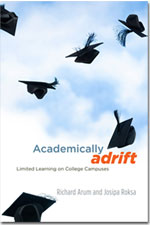Whether it’s the professor who creates Twitter backchannels in his courses, the admissions counselor who uses Facebook to engage prospective students, or the librarian who tweets about available resources in the library, higher education professionals have come up with a variety of creative ways to use social media both in and outside of the classroom.
Read more ›CURRENT ARTICLE • September 26
OTHER RECENT ARTICLES
Any effort to fundamentally change a school’s approach to academic integrity requires an understanding of its current organizational response to cheating (Bertram Gallant, 2008).
Read More ›The growth of online enrollment during the past 10 years has far outpaced that of higher education enrollment overall, and college presidents expect that trend to continue.
Read More ›Web 2.0 Tools in the Classroom: Embracing the Benefits While Understanding the Risks
Earlier this year a UCLA student made a video tirade against Asian students and posted it to YouTube. She quickly removed the hateful clip, but it was too late. The damage was done.
Read More ›When students need to write a paper, where do they go? A study released last month on plagiarism found that social and user-generated websites are the most popular resources, followed by academic and homework-related sites. Cheat sites and paper mills comprised less than 15 percent of the total resources used and showed the most significant decline over the period examined.
Read More ›More than 80 percent of college faculty use some form of social media in their teaching, with online video by far the most popular application, according to a new survey from the Babson Survey Research Group and Pearson. The results were presented early this month during Cite 2011, Pearson's 12th annual higher education technology conference.
Read More ›Academically Adrift is provoking plenty of discussion throughout American higher education, and with good reason. While there are valid concerns about the methodology, instrumentation and overreaching inferences of Richard Arum’s and Josipa Roksa’s research study, many of their conclusions are important ones that have been confirmed by others.
Read More ›Community colleges are notorious for embracing pedagogical fads—what faculty members sometimes refer to derisively as “the flavor of the month.”
Read More ›On the one hand, a forceful budget of bad news at a time rife with negatives about higher education. On the other, the stubborn hope that we will do better. Those who believe higher education can do a better job—and I am one—will acknowledge the force of Academically Adrift as wake-up call. Although that call is not new, the rhetorical effects of this book are powerful.
Read More ›College professors have long bemoaned the fact that they view the product or outcome of higher education differently from their students. Ask a professor what the goal of a college education is, and the answer you’re likely to hear is wisdom, knowledge, insight, understanding, or some variant of these. Ask the same question of a student (or that student’s parents), and you’re likely to hear an answer like a diploma, a job, or lots of money. That difference in perspective is certainly not new and, although some generations of college students are more idealistic or socially engaged than others, it’s certainly not surprising that American families tend to make college decisions in terms of return on investment; that’s how they make most of their other decisions, too, at least when the question involves how they should spend their money.
Read More ›





